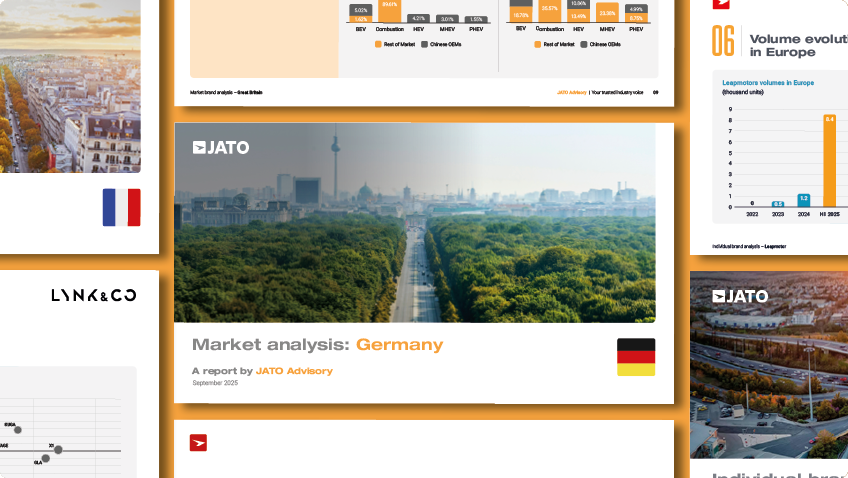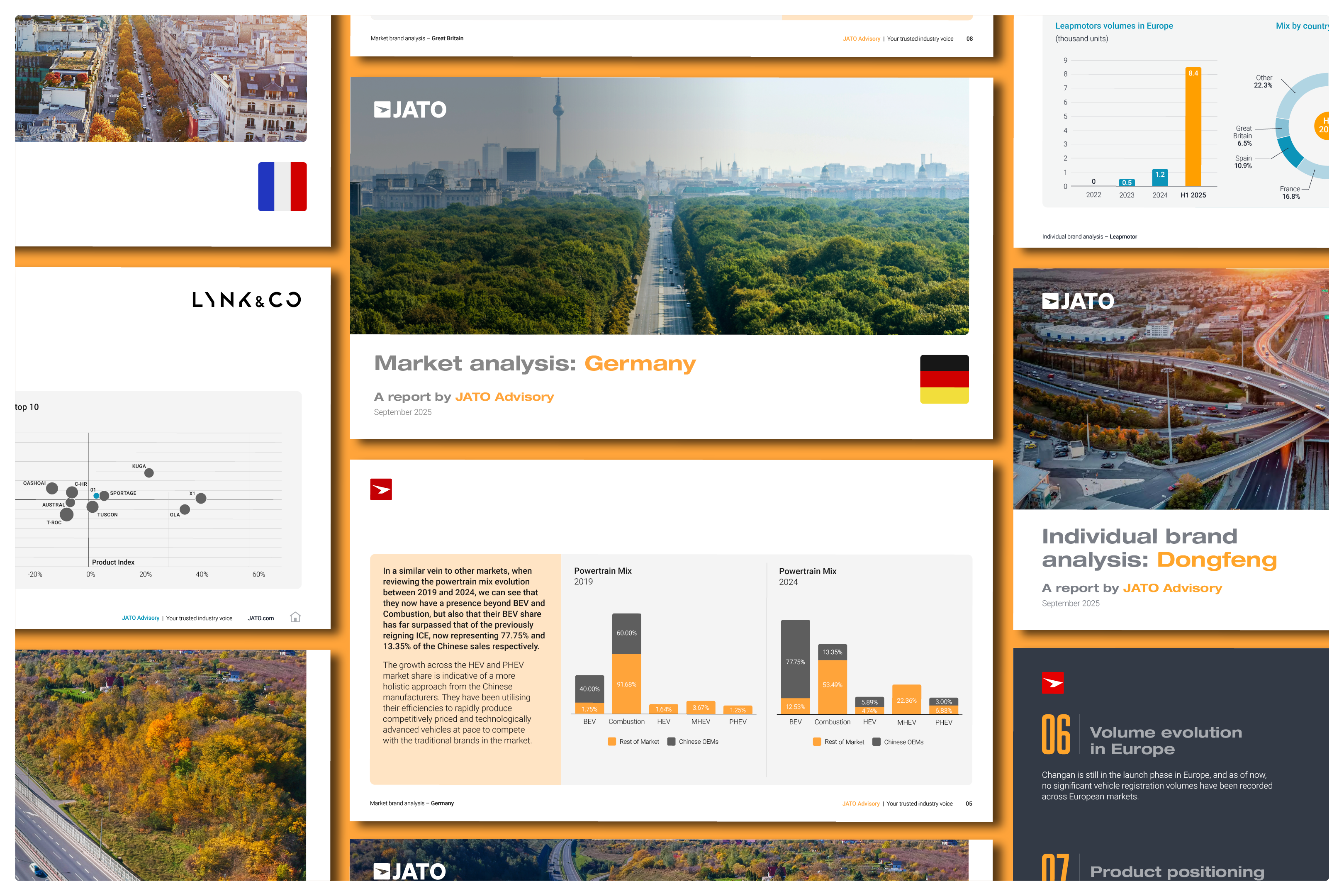
Beyond the brand: China’s growing auto market share in Europe
JATO Advisory brings you a new series of reports dedicated to China’s growing market share in the European automotive market. Through in-depth analysis of key markets and brands, our consultants examine how Chinese vehicles are reshaping the European automotive landscape.
Introduction to the brand analysis
Over the past five years, Chinese* automotive brands have significantly accelerated their expansion into the European market, reshaping the competitive landscape through innovative business models, diversified product strategies, and increasingly localised operations.
Understanding these dynamics is crucial for industry stakeholders—which is why we've compiled detailed analyses of both Chinese brands and individual European markets.
To get started, explore our introductory blog post on this market shift.
*Chinese — The use of the term “Chinese” throughout the study is intended solely to identify and analyse the growth of brands that are headquartered and/or developed in China. This terminology is used for descriptive and analytical purposes only, without any intent to assign labels or make value judgments.
-
Germany
-
BYD
-
Great Britain
-
MG
-
Geely
-
BAIC
-
France
-
NIO
-
Dongfeng
-
Norway
-
Chery
-
Changan
-
Italy
-
GWM
-
Aiways
-
Spain
-
XPENG
-
Leapmotor
-
Poland
-
SERES Group
-
JAC Motors
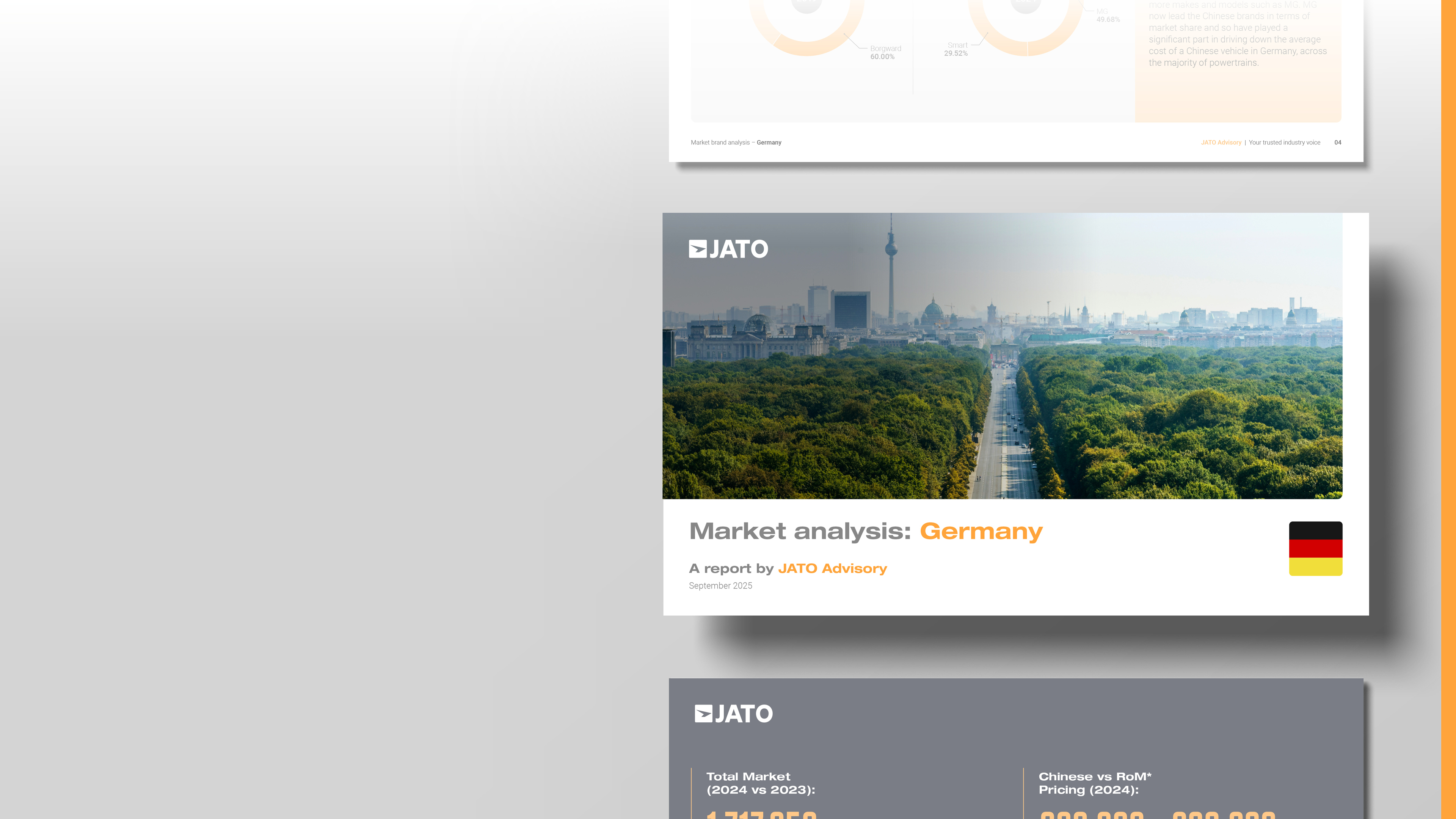
Germany
Germany's automotive market remains dominated by domestic giants like Volkswagen and Mercedes, yet Chinese brands have steadily increased their presence from negligible levels in 2019 to 1.89% by early 2025. This report examines how Chinese OEMs are challenging traditional manufacturers on their home turf.
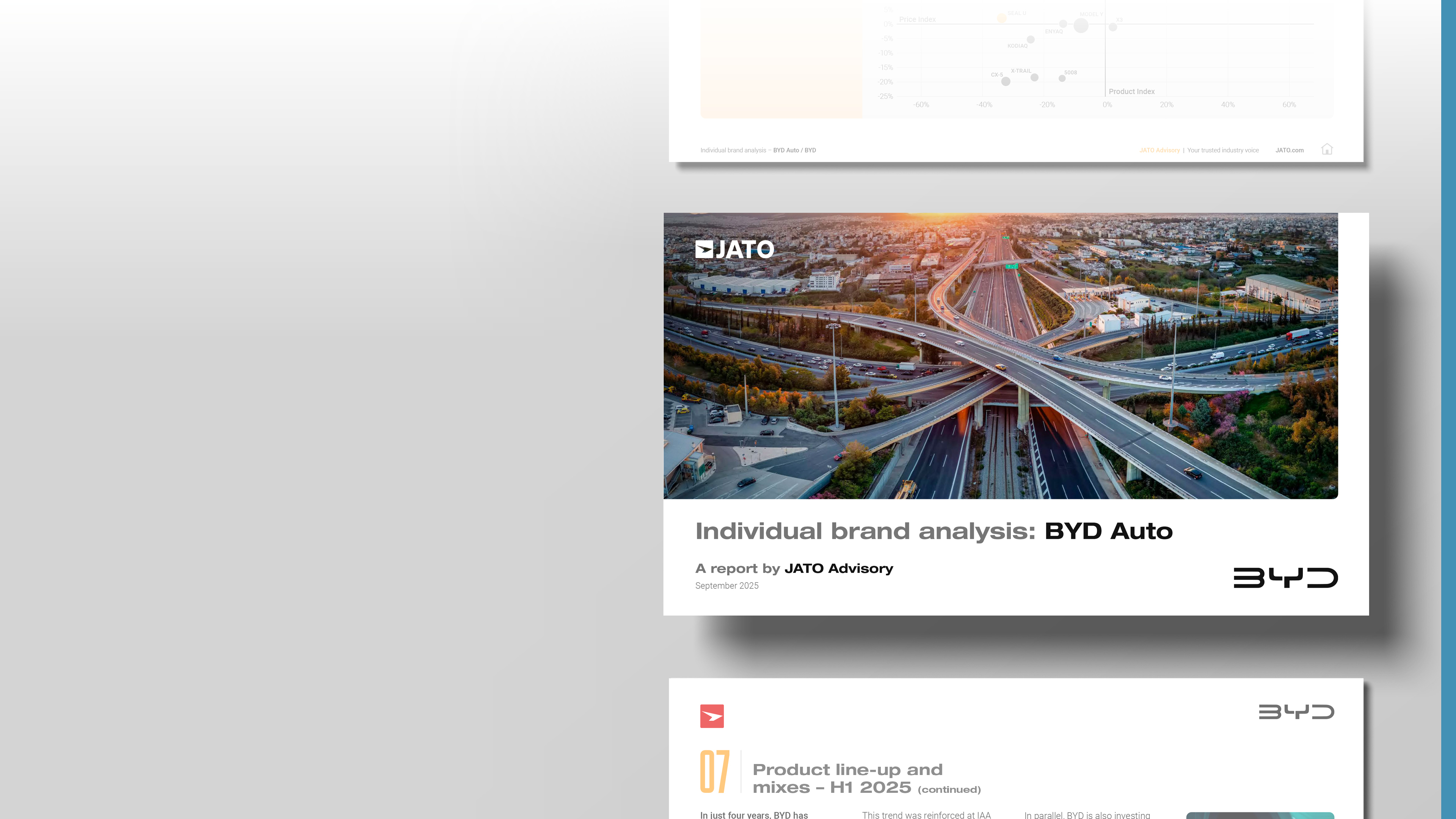
BYD
BYD has emerged as the world's top-selling Chinese automotive group, overtaking established giants including Ford, Honda, and Nissan in total global volumes in 2024. This report tracks BYD's remarkable transformation from niche importer to serious contender in the European market.
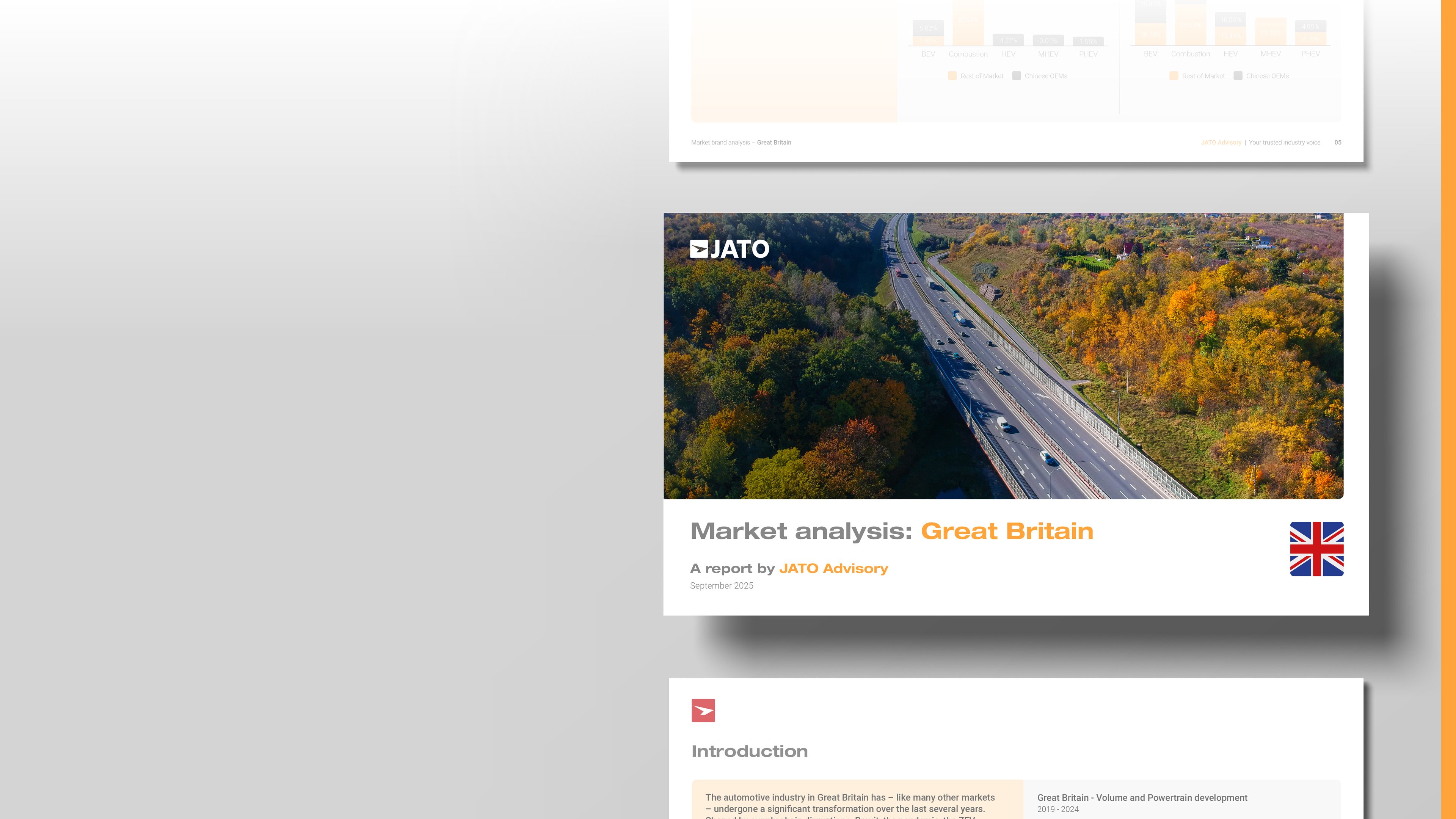
Great Britain
Great Britain's focus on electrification along with the ZEV mandate has created new opportunities for Chinese OEMs. This report examines how Chinese brands have expanded beyond their initial single-brand presence, analysing their strategic use of British heritage and competitive pricing to gain market share.
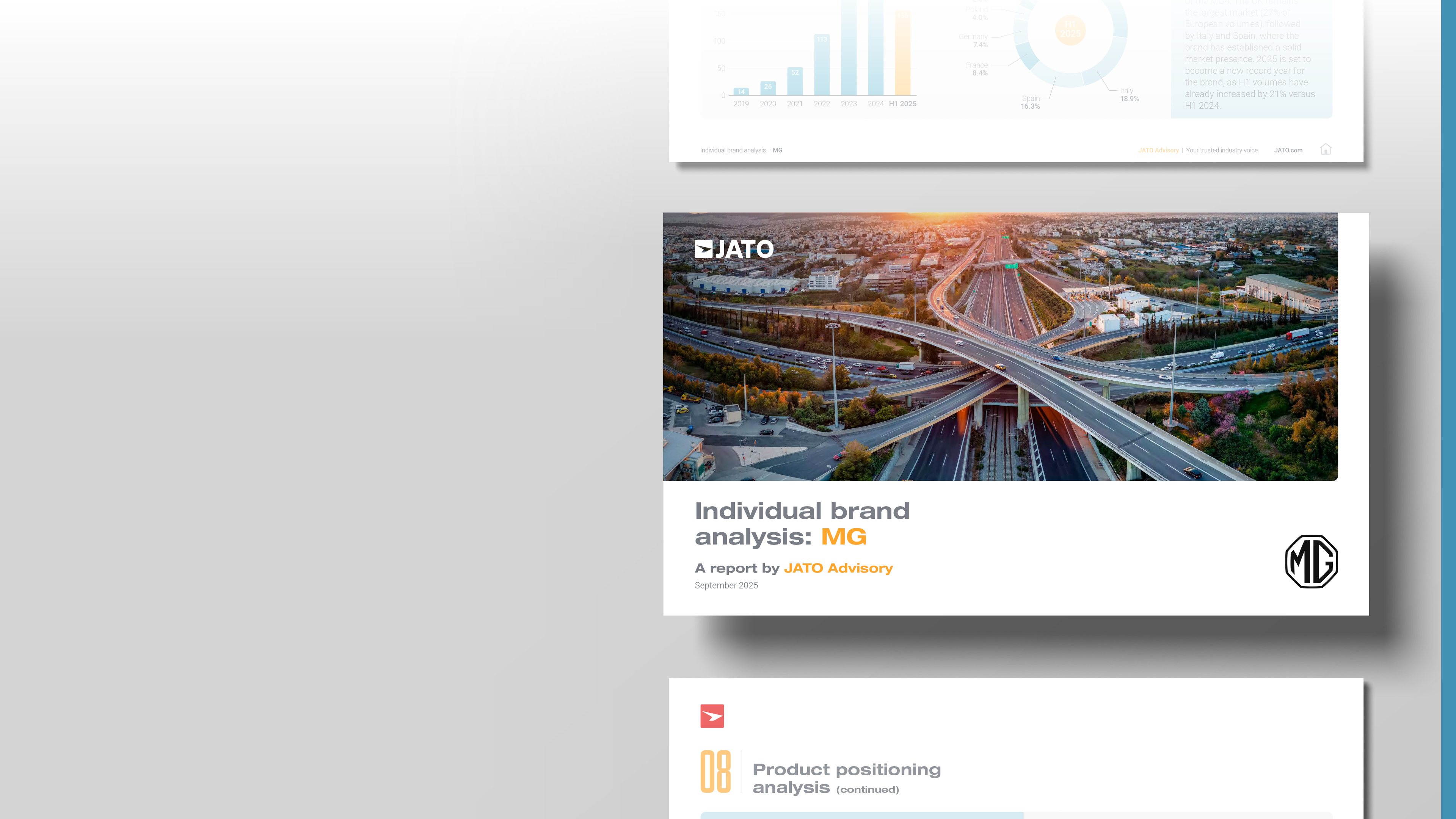
MG
MG has established itself as the most successful Chinese automotive brand in Europe, with the region now accounting for 51% of its global passenger car registrations. This report tracks MG's remarkable to becoming a major player across 25+ European markets.

Geely
As the second-largest Chinese automotive group, Geely has fast become the 11th largest automotive manufacturer globally, surpassing the likes of BMW and Mercedes. This report analyses Geely’s proprietary brands that have entered the European market.

BAIC
BAIC is taking a more considered approach to European entry, focusing on lower regulatory barriers and less competition. This report examines BAIC's measured expansion approach, product positioning in the SUV segment, and its strategic use of partnerships to establish credibility in its early-stage European operations.

France
France presents a unique challenge for Chinese OEMs, with stringent environmental scoring regulations and adjusted incentive schemes limiting their market penetration to just 2.72% in 2024. This report analyses how France’s policy has shaped Chinese OEM strategy, the market's accelerating shift toward alternative powertrains, and the potential for growth as Chinese manufacturers establish European production facilities.
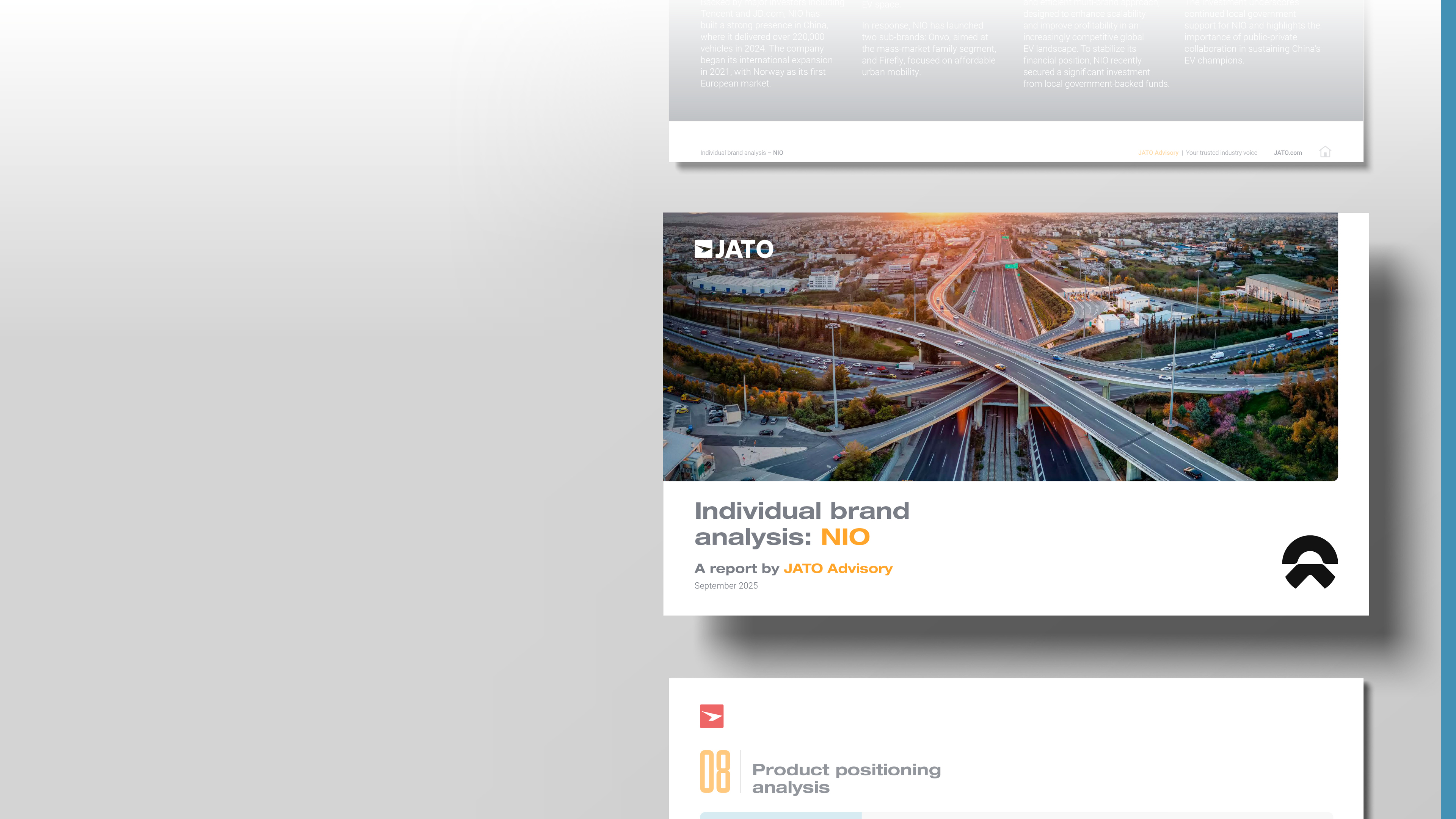
NIO
NIO entered Europe in 2021 with premium positioning and an innovative direct-to-consumer model, but has struggled to gain traction. This report examines NIO’s upper-premium product strategy, declining volumes, and its recent pivot to a multi-brand approach as the company seeks renewed European growth.
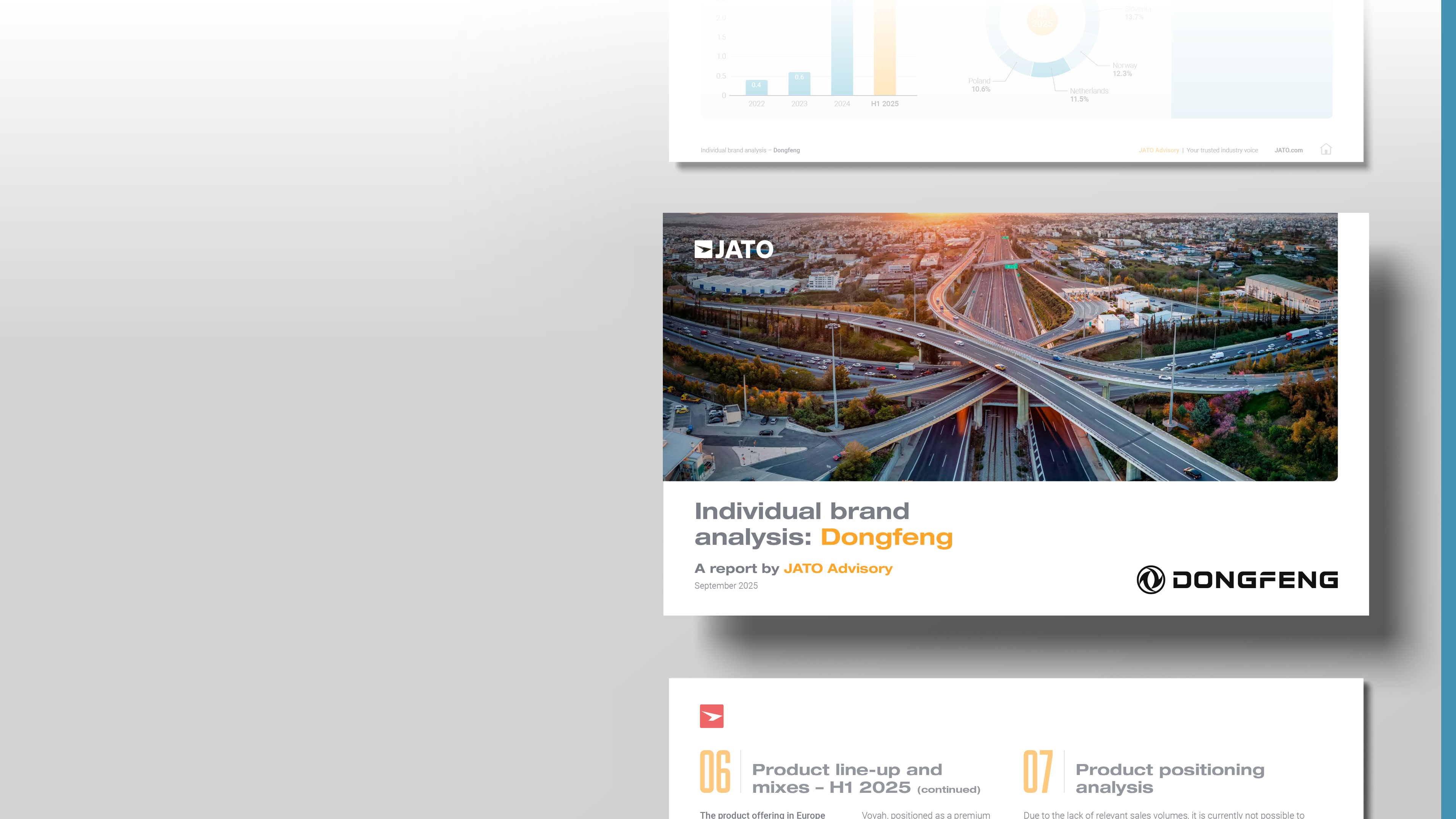
Dongfeng
Dongfeng Motor’s expansion in Europe focuses on a fragmented multi-brand strategy targeting different segments but achieving limited volumes. This report examines the group's importer-led approach across multiple markets, its challenges, and the strategic clarity needed to transition from exploratory presence to meaningful market penetration.
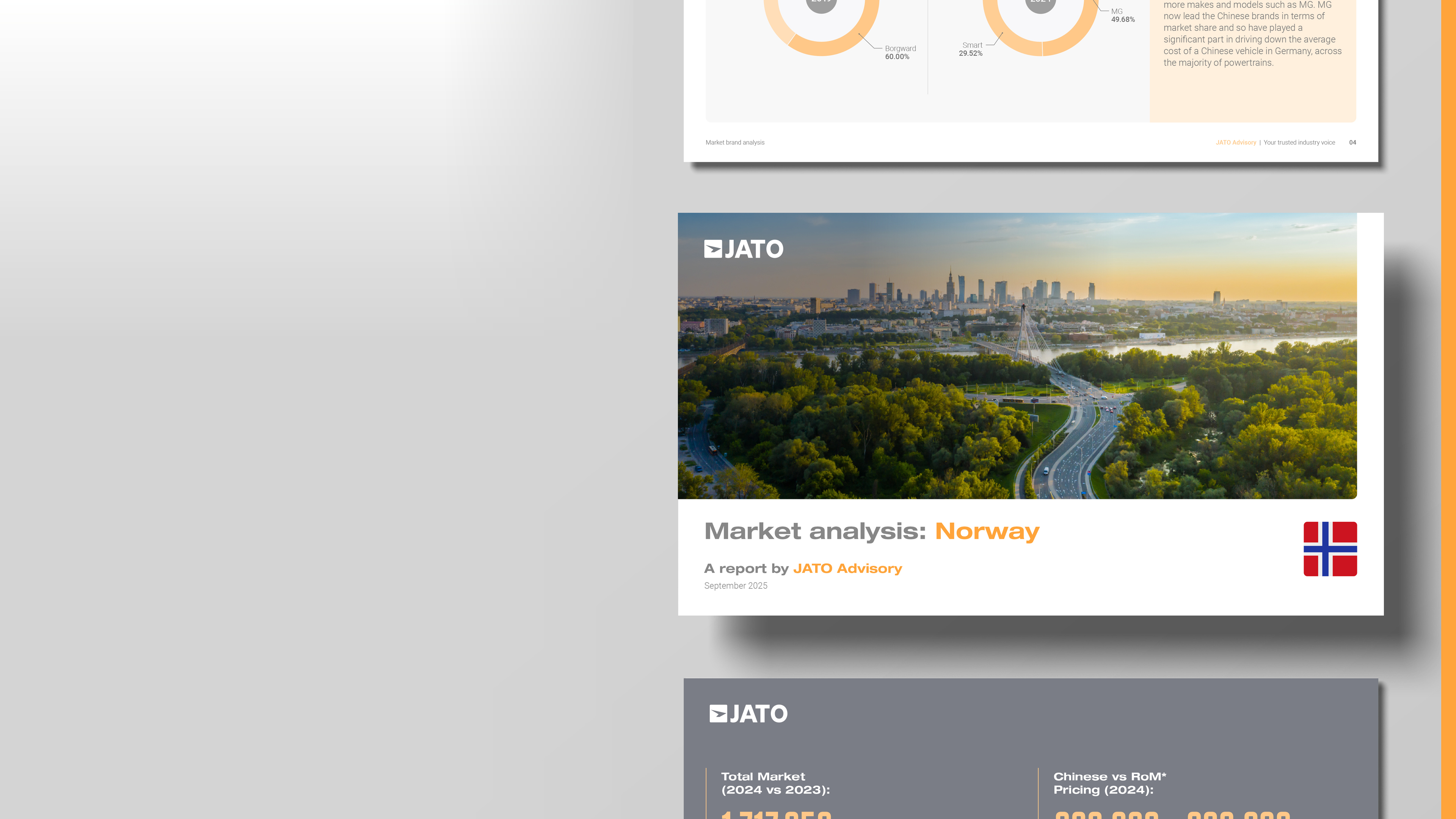
Norway
Norway leads Europe in BEV adoption with 88% of new registrations being electric in 2024, creating unique opportunities for Chinese OEMs which have captured 10% of the market. This report examines Norway’s world-leading electric transition, the competitive dynamics between Chinese brands, and how the country's infrastructure investment and tariff-free approach to Chinese imports supports its path to becoming the first fully electric nation.
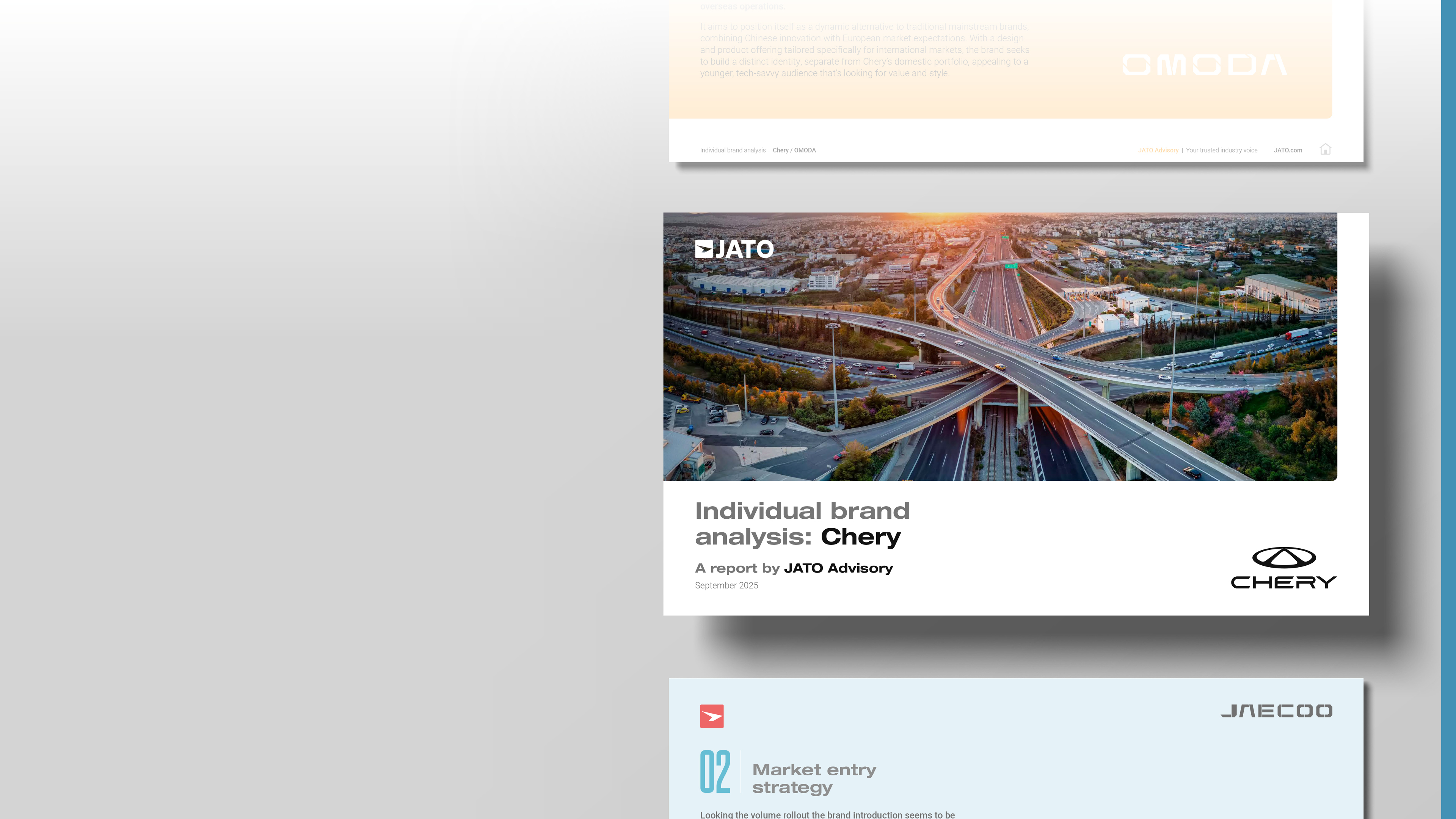
Chery
Chery Group only entered Europe in 2024 but achieved exceptional growth with H1 2025 volumes more than doubling its full year 2024 performance. This report examines Chery's dual-brand strategy targeting southern and eastern European markets, its competitive value proposition, and plans for local production in Barcelona.

Changan
Changan is pursuing an ambitious multi-brand strategy in Europe spanning mainstream to premium segments, backed by significant infrastructure investment, including R&D and design centres. This report examines the group’s ‘In Europe, For Europe’ vision, its diversified electric vehicle line-up, and early-stage positioning as it transitions from product exporter to integrated European player.
.jpg)
Italy
Italy has one of Europe’s lowest BEV adoption rates at just 4.2% in 2024, yet Chinese OEMs have grown their market share to 5.6% in 2025 by competing across multiple powertrains. This report examines Italy’s price-sensitive market dynamics, the recent emergence of affordable Chinese models in bestseller rankings, and how new subsidy packages and charging infrastructure improvements may reshape opportunities for both Chinese and domestic brands.

GWM
Great Wall Motors has navigated multiple strategic phases in Europe, from early eastern European operations to the recent closure of its Munich headquarters and consolidation under the 'ONE GWM' brand strategy. This report examines the group’s evolution across its brands, declining volumes since a 2023 peak, and the challenges of maintaining European presence through an importer-led model.

Aiways
As one of the first Chinese brands to enter Europe in 2020, Aiways reached peak volumes in 2021 before facing financial crisis and disappearing from the market by H1 2025. This report examines the brand's digital-first distribution model, its limited product range focused exclusively on BEVs, and the strategic misalignment between aggressive pricing and product offering that undermined its early-mover advantage in Europe.
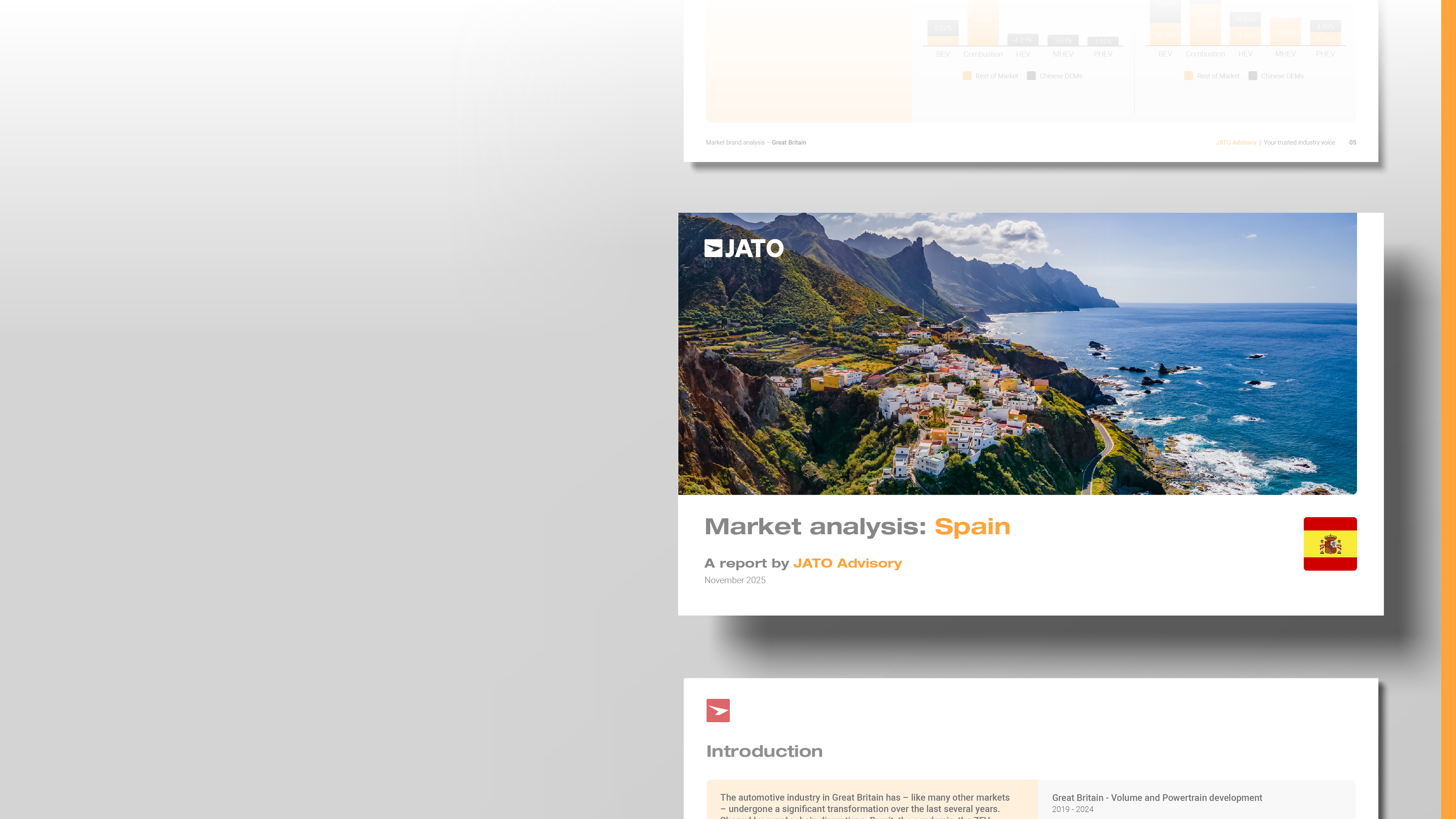
Spain
Spain is emerging as a connector market for Chinese manufacturers, with their share jumping to 8.0% in 2025. This report examines Spain’s evolving powertrain mix, the competitive pricing advantage of Chinese brands averaging £8,000 less than rivals, and how the market’s receptiveness to affordable vehicles positions it as a strategic entry point for expanding Chinese OEMs.
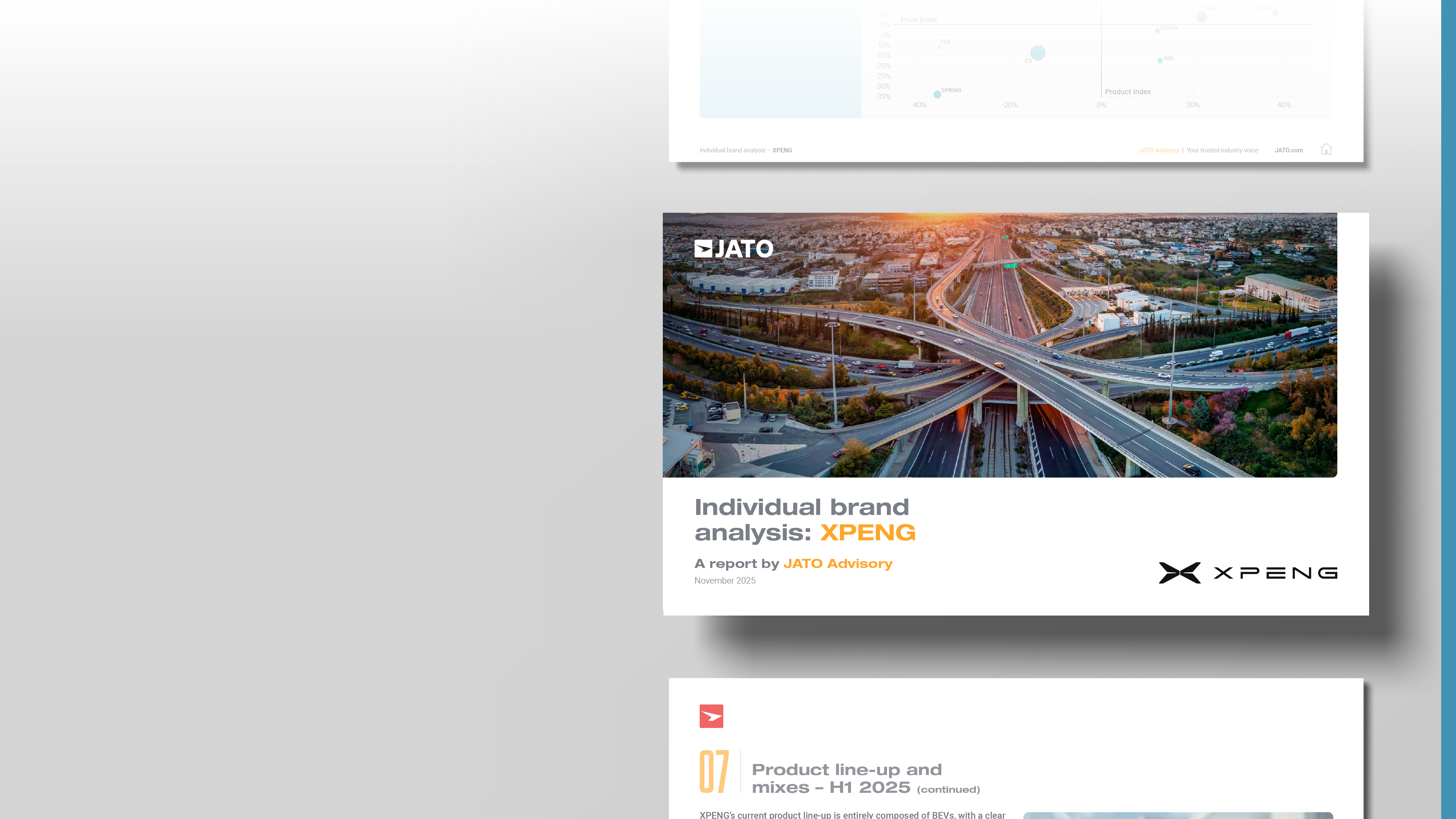
XPENG
Entering Europe as a premium BEV brand, XPENG focused on intelligent mobility and autonomous driving technologies, achieving modest growth before accelerating expansion into major markets from 2024. This report examines the brand’s hybrid dealer strategy combining importers and direct sales, its product line-up, and the competitive positioning challenges it faces in the increasingly saturated premium electric segment.
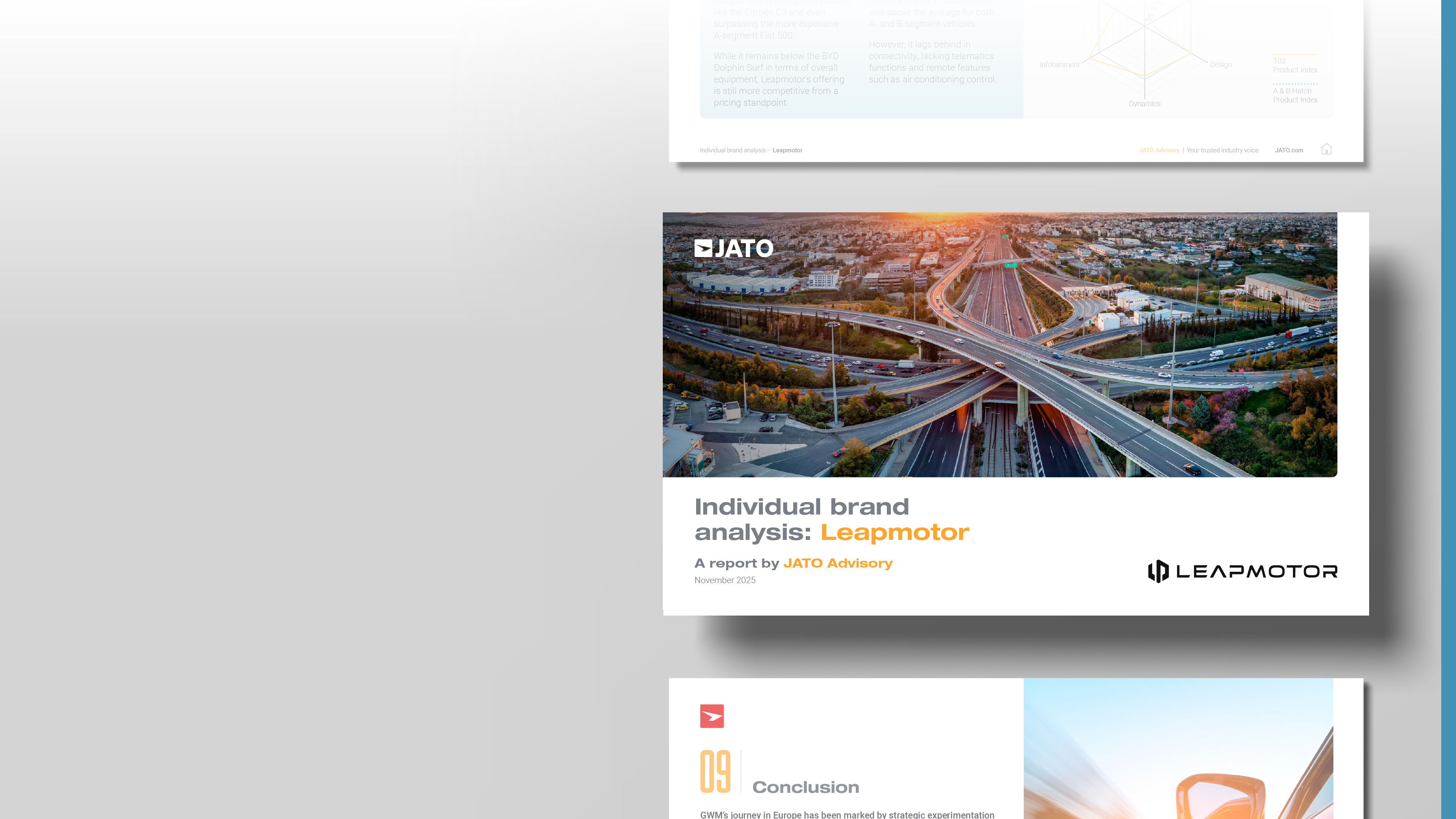
Leapmotor
Leapmotor’s focus on smart, affordable NEVs has given it a strong presence in China’s domestic market. The company’s joint venture with Stellantis in 2024 has enabled Leapmotor to enter and expand in Europe. This report examines the effectiveness of Leapmotor’s European strategy and the strength of its partnership with Stellantis.
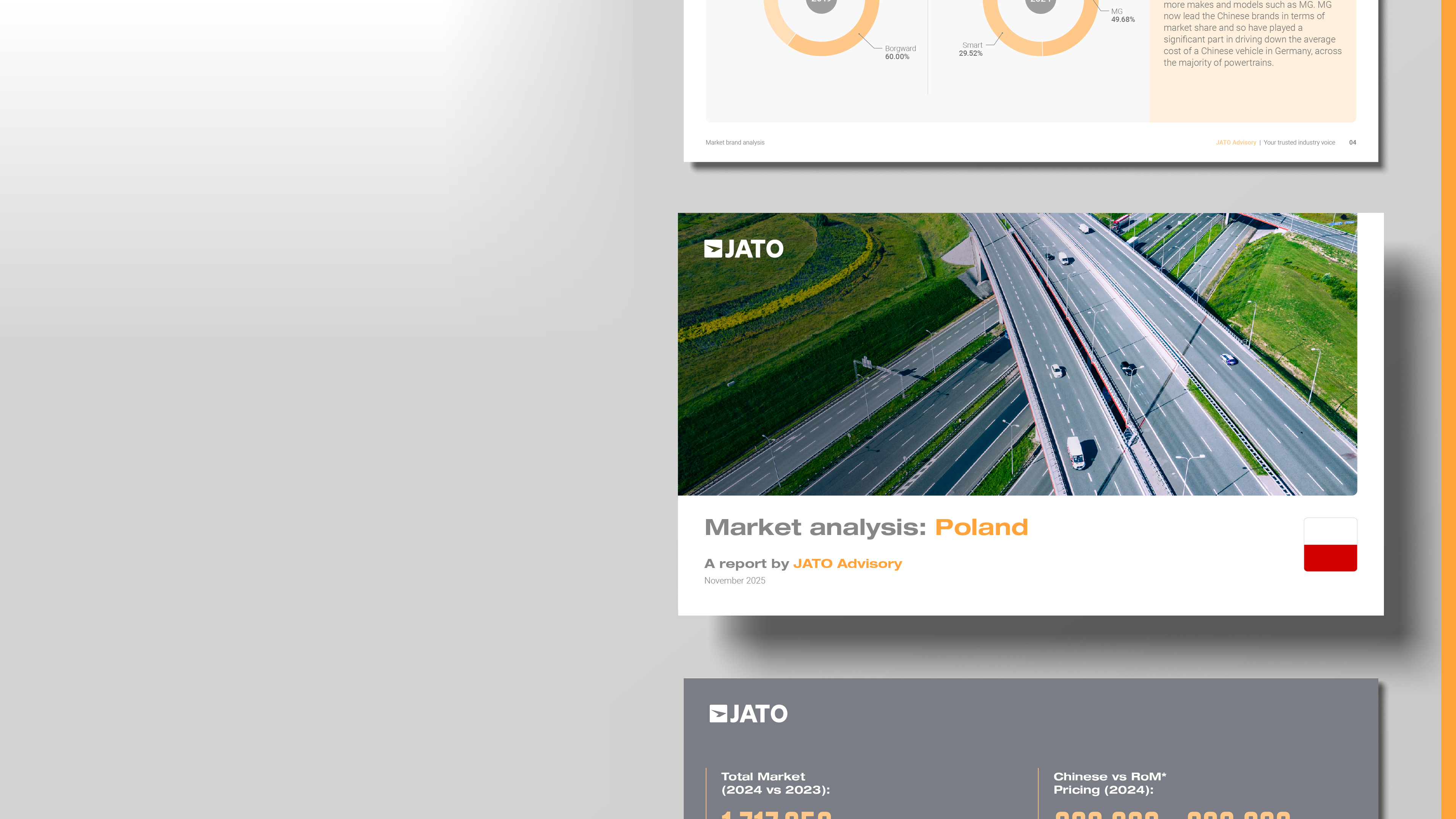
Poland
Poland is rebounding strongly post-pandemic, with new car registrations nearing 2019 levels and Chinese OEMs rapidly gaining ground, reaching 5.8% share in 2025 YTD. This report explores Poland’s slow BEV uptake, the rising role of affordable hybrids, and how competitive pricing has opened the door for Chinese brands to expand in a cost-sensitive, infrastructure-improving market.
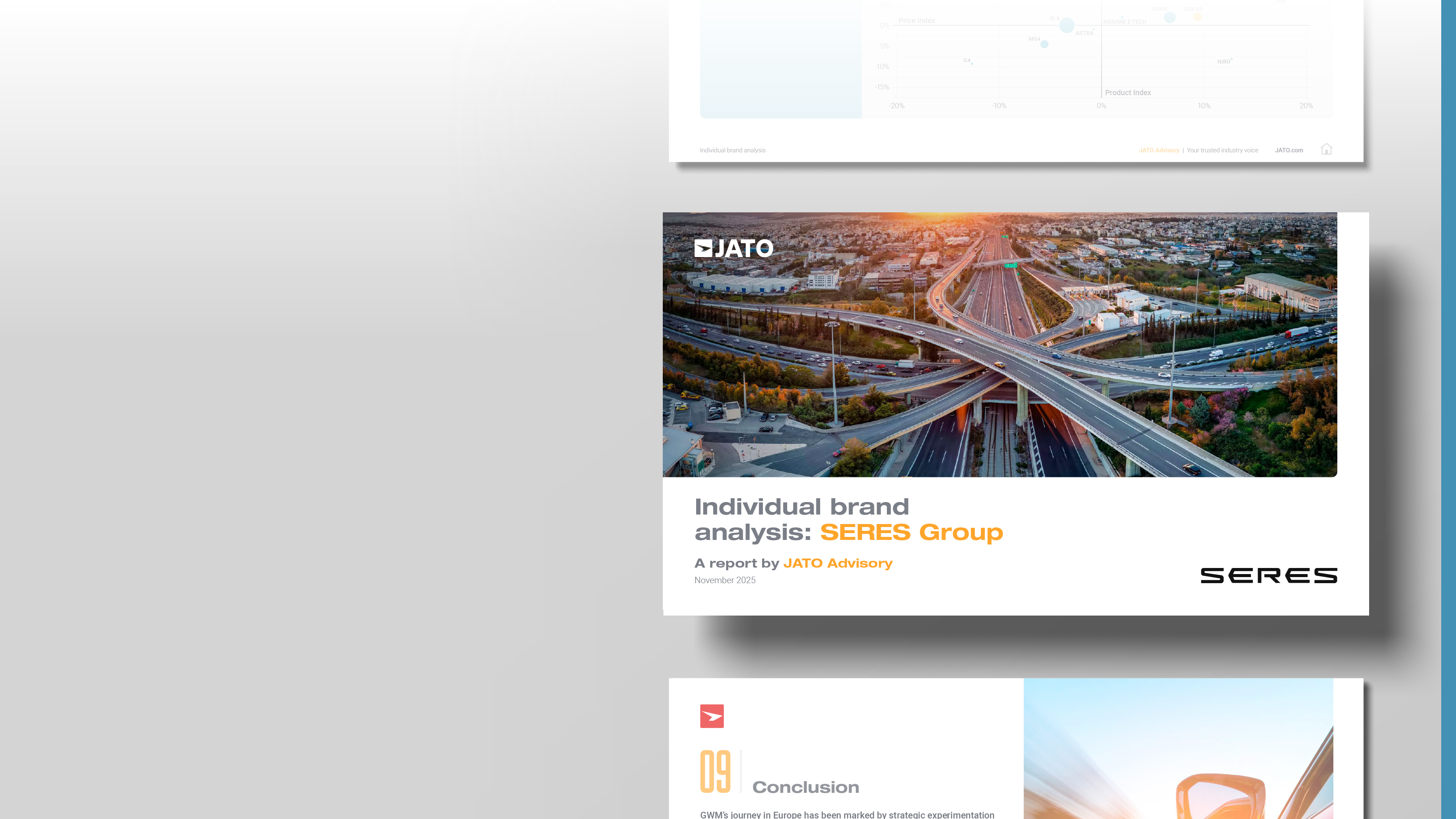
SERES Group
An up-and-coming player, SERES Group Motors’ sales volumes in Europe grew exponentially from 100 units in 2019 to 2,800 units in H1 2025. This report examines its line extensions and which European markets the group is most dominant in.
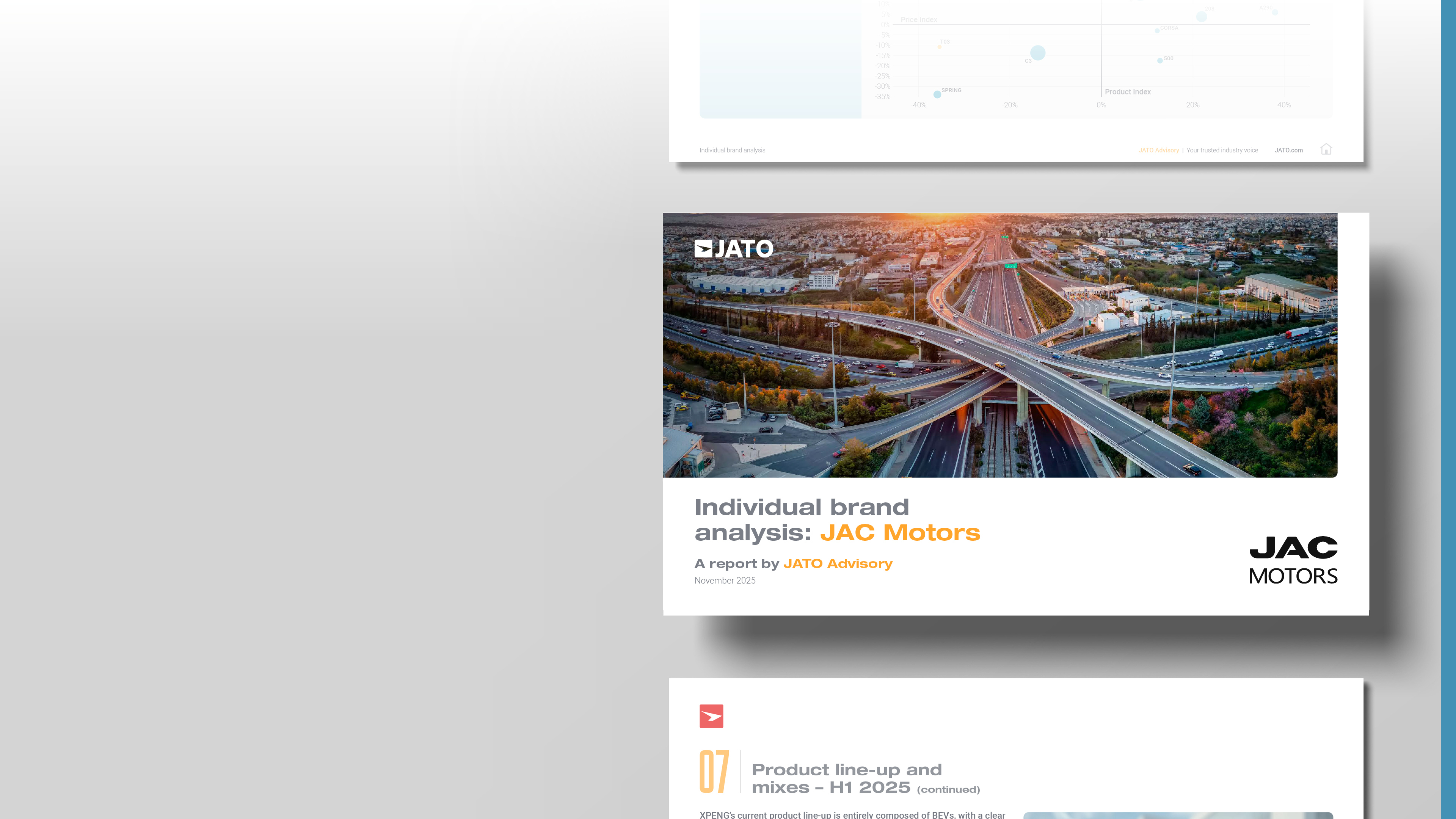
JAC Motors
JAC Motors is one of China’s longest-standing automotive manufacturers, who’s major focus remains on production of BEVs. This report examines its cautious approach to Europe and why it’s product line-up appeals to budget conscious consumers.
Methodology
The study is entirely based on passenger car brands and corresponding sales volumes.
The brand analysis reports will provide an in-depth evaluation of the current status of the main Chinese brands that have either already launched their models in Europe or are approaching the launch phase. The objective is to offer a structured and comparative overview of their strategic approaches, market performance, and brand positioning within the European context.
The country reports, on the other hand will provide a comprehensive assessment of how Chinese automotive brands are collectively reshaping key European markets, examining market penetration, competitive dynamics, and the evolving landscape across different segments and powertrains.
See a breakdown of our methodology on the right.
We assess how each brand entered the European market, including the initial launch countries, the timeline of entry, and the expansion patterns across the region. This section highlights whether the brand adopted a selective rollout, focusing on specific strategic markets, or pursued a pan-European approach from the outset.
To define a market entry, we have considered the moment when a brand began registering a relevant volume of units in a given country, indicating the start of meaningful commercial operations. All analyses begin from 2019, which serves as the baseline year for this study. Market entries that occurred prior to this date are included in the 2019 column, to ensure consistency and comparability across brands.
We explore each brand’s identity and messaging in Europe by analysing official communications, public statements, and interviews released by brand representatives. This qualitative approach allows us to understand not only how each brand presents itself to the European market, but also the strategic intent behind its positioning. Through this approach, we examine the brand’s core values, such as innovation, sustainability, affordability, or user-centricity, and how these are reflected in its product offering, marketing language, and customer engagement strategies.
Distribution models adopted by Chinese automotive brands in Europe vary significantly, reflecting different strategic priorities, levels of investment, and degrees of control over the customer experience. In this section, we examine how each brand is building its commercial footprint and adapting to the structural and regulatory norms of the European retail landscape.
The analysis considers the type of distribution model implemented, ranging from direct ownership of dealerships to agency models, traditional dealer networks, and importer-based structures. These models differ not only in terms of operational complexity and cost, but also in how they shape the relationship between the OEM and the end customer.
Some brands, following the example of Tesla, have opted for a vertically integrated approach by establishing OEM-owned dealerships, allowing them to retain full control over pricing, customer interaction, and dealer margins. Others have adopted the agency model, where the OEM retains ownership of the vehicle until sale and the dealer acts as an intermediary, earning a fixed commission while the OEM manages inventory and pricing centrally.
More traditional players continue to rely on the dealer model, selling vehicles to independent dealers who assume ownership and bear all associated sales costs. Finally, several Chinese entrants have chosen the importer model, delegating full responsibility for market operations to a local partner who manages distribution, retail, and after-sales services.
These strategic choices reflect the brand’s maturity and investment capacity, as well as its ambition to establish a long-term presence in Europe. The selected model influences everything from brand perception to customer experience, which plays a critical role in shaping the success of each market entry.
While assessing the level of commitment to the European market, we have examined the establishment of local structures and operations across the region. This includes the creation of headquarters and legal entities, the development of research and design centres, and the announcement or activation of manufacturing facilities. These elements provide a clear indication of how seriously each brand is approaching its European strategy – not merely as an export opportunity, but as a long-term investment.
The main sources are the official release from the OEM, their company profiles and online articles on the topic.
Using JATO registration data, we track annual and half-year volumes as well as country-level performance. This allows us to assess the commercial success and scalability of each brand’s strategy.
The countries considered in the scope are Austria, Belgium, Croatia, Czech Republic, Denmark, Estonia, Finland, France, Germany, Great Britain, Greece, Hungary, Ireland, Italy, Latvia, Lithuania, Luxembourg, Netherlands, Norway, Poland, Portugal, Romania, Serbia, Slovakia, Slovenia, Spain, Sweden, and Switzerland.
Through JATO registration data we analyse the European offering of each brand, including:
- Model segmentation (segment and body)
- Powertrain mix (ICE, MHEV, HEV, EREV, PHEV, BEV)
For the analysis we have considered H1 2025 registration.
The target of this section highlights if and how brands tailor their product portfolios to local preferences and regulatory requirements.
For all brands that have already reached meaningful volumes in one of the five major European markets (Germany, UK, France, Italy, Spain), we have identified their most successful model and its leading market. This selection allows us to assess the product’s positioning in the most recent available months using the JATO Product Navigator.
The positioning analysis is based on two key dimensions:
- Product index: to evaluate the richness of each model’s standard equipment compared to the segment average and its competitors.
- Price index: to compare the model’s list price to the segment benchmark and other models within the segment to determine its competitiveness.
To be noted:
- All the averages are weighted for volumes.
- Only standard equipment has been considered.
- The equipment valuation follows the JATO value table methodology.
As a second step, we have developed a spider graph to visualise the model’s strengths and weaknesses across different equipment categories, highlighting where it performs above or below the segment average.
This approach provides a clear view of each model’s positioning relative to its competitors, its value-for-money ratio, and the specific areas where it excels or falls short in terms of content offering.


.png)

